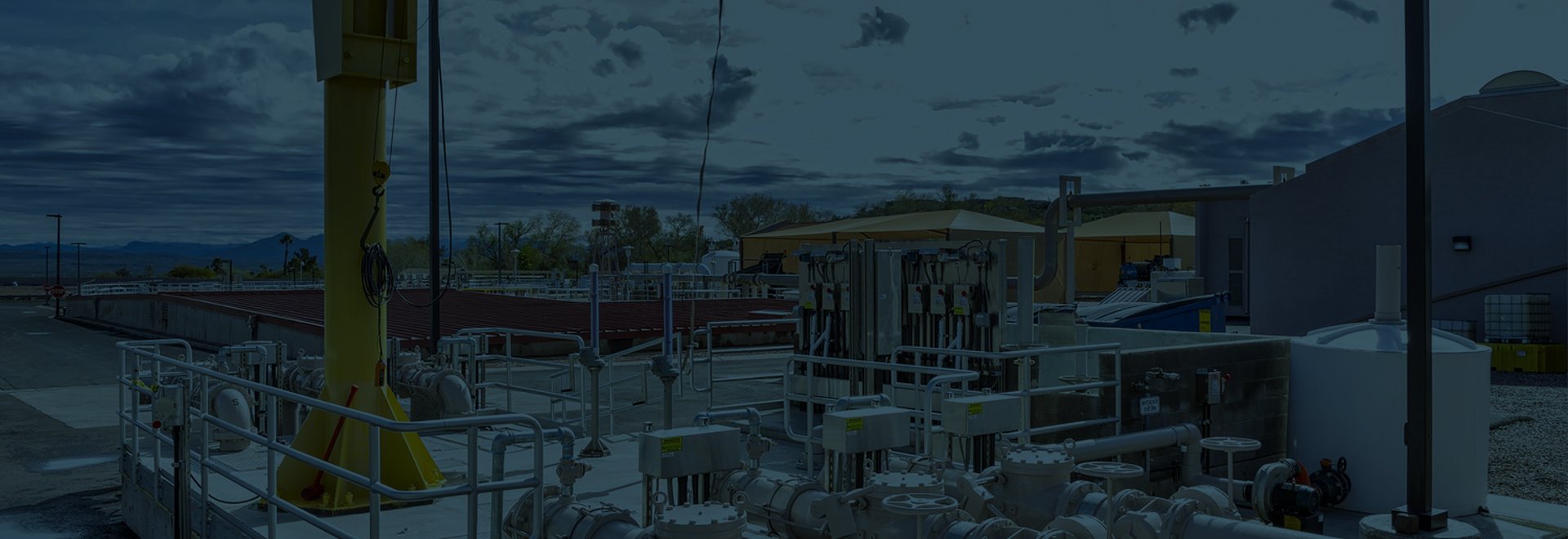
Success Story: Fountain Hills, AZ
Goodbye “Feeling Stranded”, Goodbye Spreadsheets
The community of Fountain Hills, near Scottsdale, Arizona, is proud of their Sanitary District, and rightly so. They collect and treat nearly 2 million gallons per day of raw wastewater, and treat it to Class A+ recycled water, every drop of which is beneficially reused for irrigation in golf courses and parks.
ABOUT FOUNTAIN HILLS
“It is easy to use and intuitive, since it’s laid out the way we collect our data now. The best part is that we don’t have to recreate the wheel (and numerous spreadsheets) every calendar year.”
Dana Trompke, P.E.
Fountain Hills District Manager
Fountain Hills Sanitary District was in a risky position with an ineffective system of manually collecting and entering data into an outdated series of spreadsheets. A more reliable, affordable and efficient system was needed in a very short period of time. Waterly delivered an efficient, centralized data platform that saved staff time and effort, resulting in secure data, simpler regulatory reporting and overall peace of mind.
AT A GLANCE
The data storage for all the treatment, process, flows, etc., were kept on 20 complex, interconnected Excel spreadsheets. All the data required for monthly and annual compliance reporting for air quality and wastewater treatment process, generator use, customer re-use billing, and other sensitive reports came from those complex, carefully-linked spreadsheets. Although extremely useful for the time they were developed, the spreadsheets over time grew more difficult to use due to repetitive editing, accidental deletions, leap years and so on. The spreadsheet “database” became even more precarious when the one person who knew the most about their creation and upkeep resigned. District Manager Dana Trompke, P.E., “felt stranded,” with only a few weeks until the new year to find a new solution. She understood the risks that a potential transition posed and knew it was time to do something smarter. She also knew the staff was “craving a better solution but didn’t know what it was.”
PROBLEM ADDRESSED
During her visit to Chicago for WEFTEC in October 2021, Dana met Waterly at the WaterClick booth. Waterly simplifies data collection and management for water and wastewater utilities of all sizes. Chris Sosnowski, Waterly and WaterClick CEO, assured Dana that his team could provide an affordable way to remove the Excel headache by streamlining the data from the source and eliminating all the duplicate data entry. With the help of the District’s dedicated staff and the motivation of an ambitious, five to six week onboarding schedule, Waterly remotely leveraged their software to collect and report approximately 250 data points that used to be keyed into the many spreadsheets from a dozen clipboards. By the start of 2022, they had the basics of the new data entry and storage system up and running.
SOLUTION(S) USED
According to Ms. Trompke, “every single staff member liked it. It is easy to use and intuitive, since it’s laid out the way we collect our data now.” Now, the data from the many different facilities are input into iPads instead of hand-written to be keyed in later. This helps reduce errors and makes the data instantly available in the Cloud so it can be accessed by any computer, any time. Instead of maintaining 20 different spreadsheet files, the District now has a centralized system that can be accessed by any authorized user, anywhere, on an easy-to-use platform. Complex regulatory and operational data reports are produced with a single click each month, saving hours of editing Excel spreadsheets. “The best part is that we don’t have to recreate the wheel (and numerous spreadsheets) every calendar year,” Ms. Trompke added. Future plans include considerations for automating pushing the District’s SCADA data (mostly flow meters) securely through the WaterClick partner network, to further save operations’ staff time with data entry by sourcing the data from instruments directly.
OUTCOMES
District Manager Trompke says there is no way to quantify all the lost time people spent messing with the spreadsheets – redoing them, baby-sitting them, fixing the broken links. Waterly’s cost-effective system gives them “peace of mind,” according to Trompke. The database system is set-up, easily editable for different future conditions, and rolls over year to year with no drop in data. Having the Waterly service as an annual service fee makes it more cost effective than purchasing and maintaining a database software package in-house.
There is a new efficiency that the centralized system gives them. Trompke says that she is not worried about losing data and she knows that “five years down the line we can look back in history and know what was happening and have confidence in the data.”
The Waterly system also gives them a smoother process to make run logs for the generators available to County inspectors for compliance with the District’s air quality permits. The automation saves staff time and assures that they will keep in compliance and avoid permit violations by having reliable data available with a keystroke.
HOW MUCH DID IT COST?










